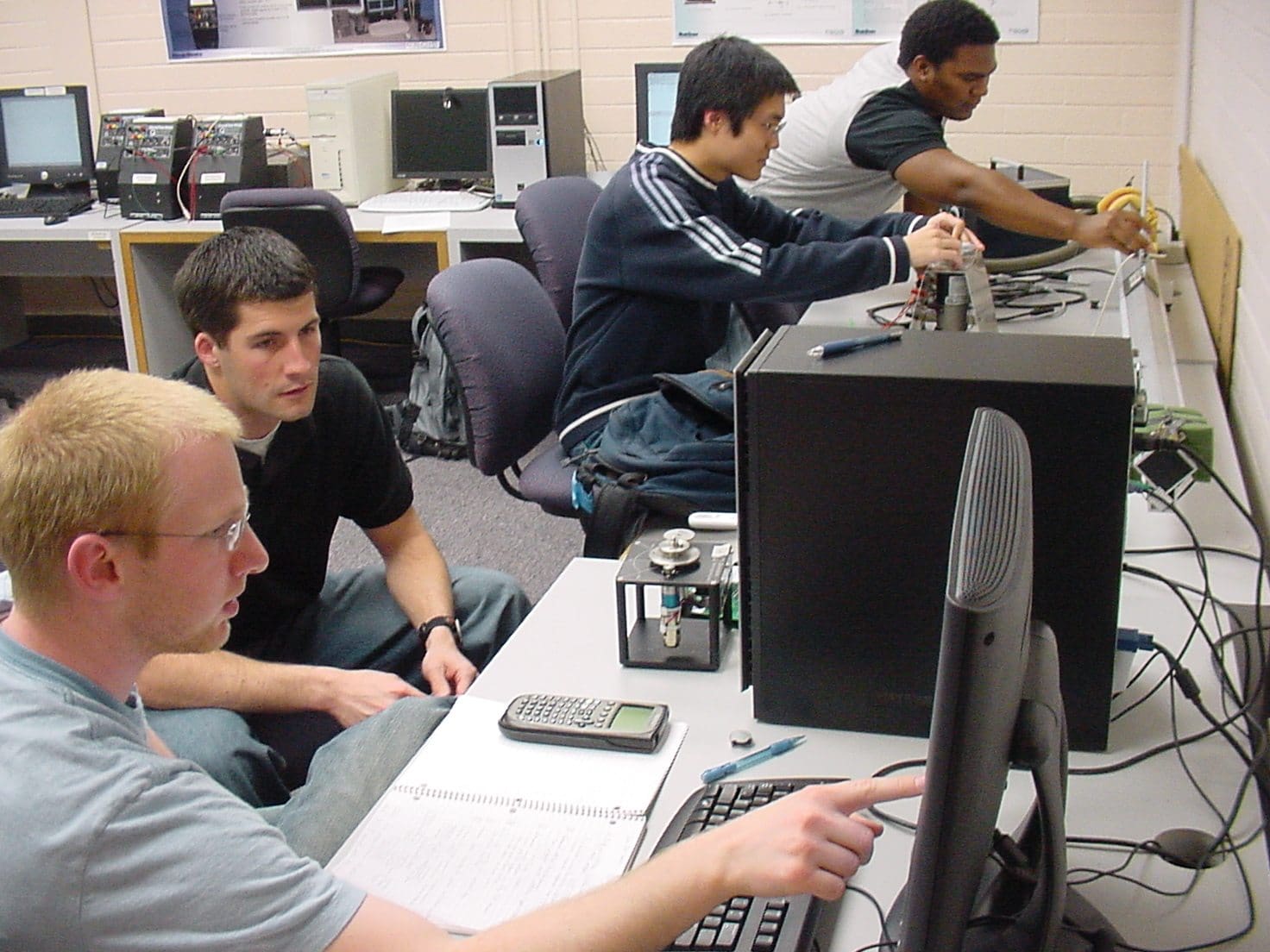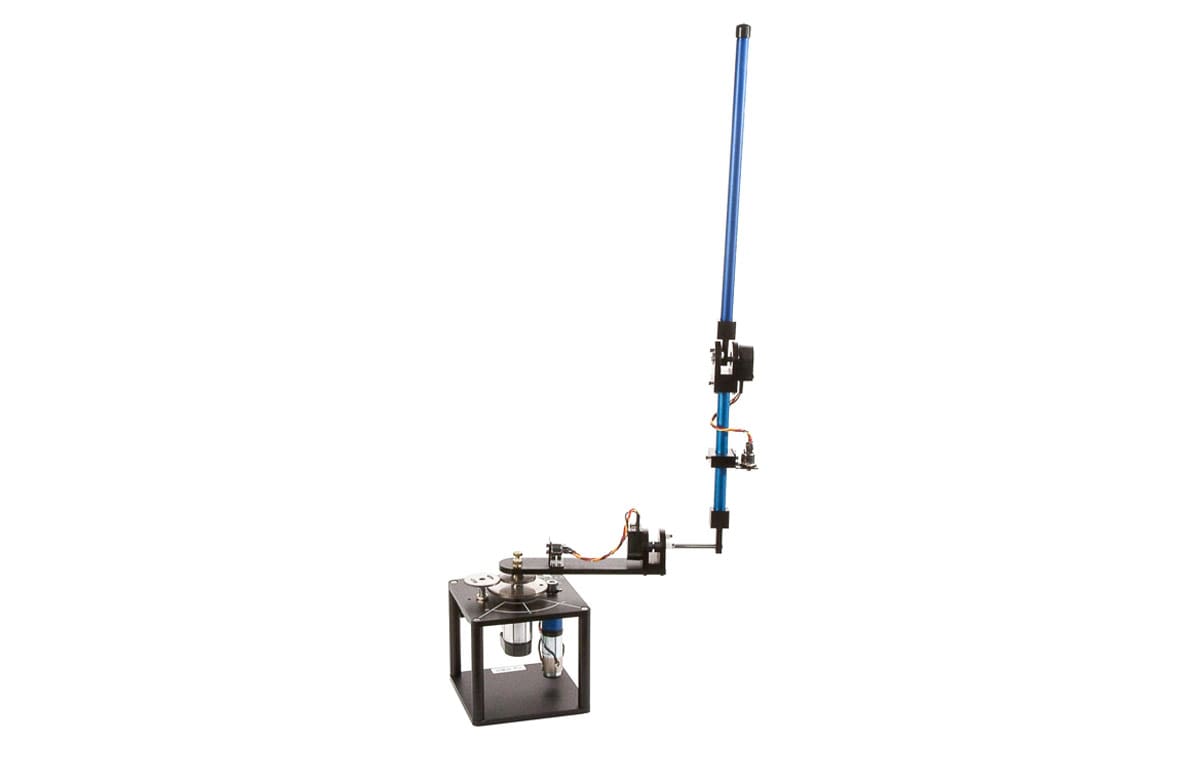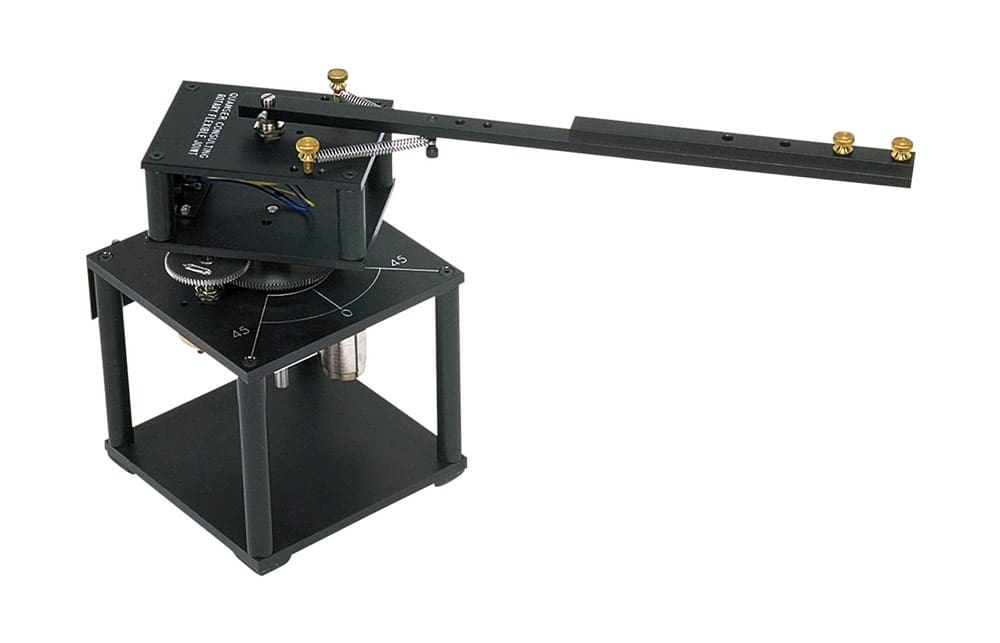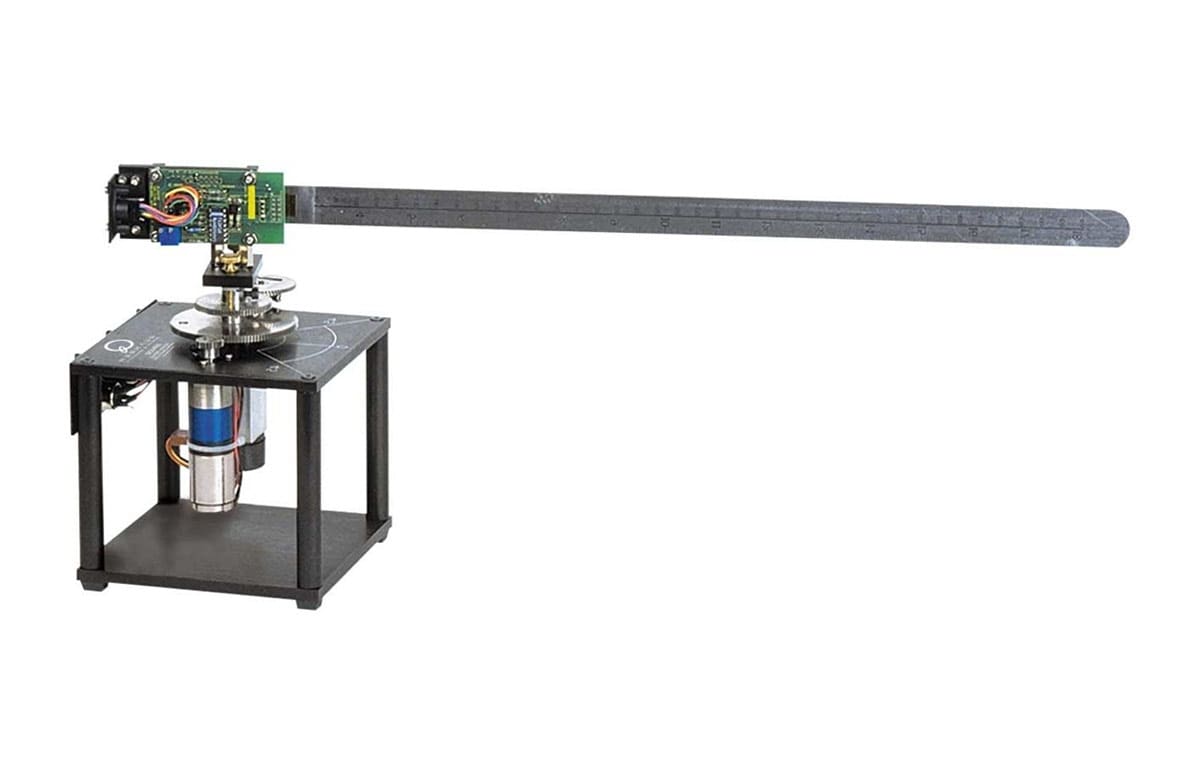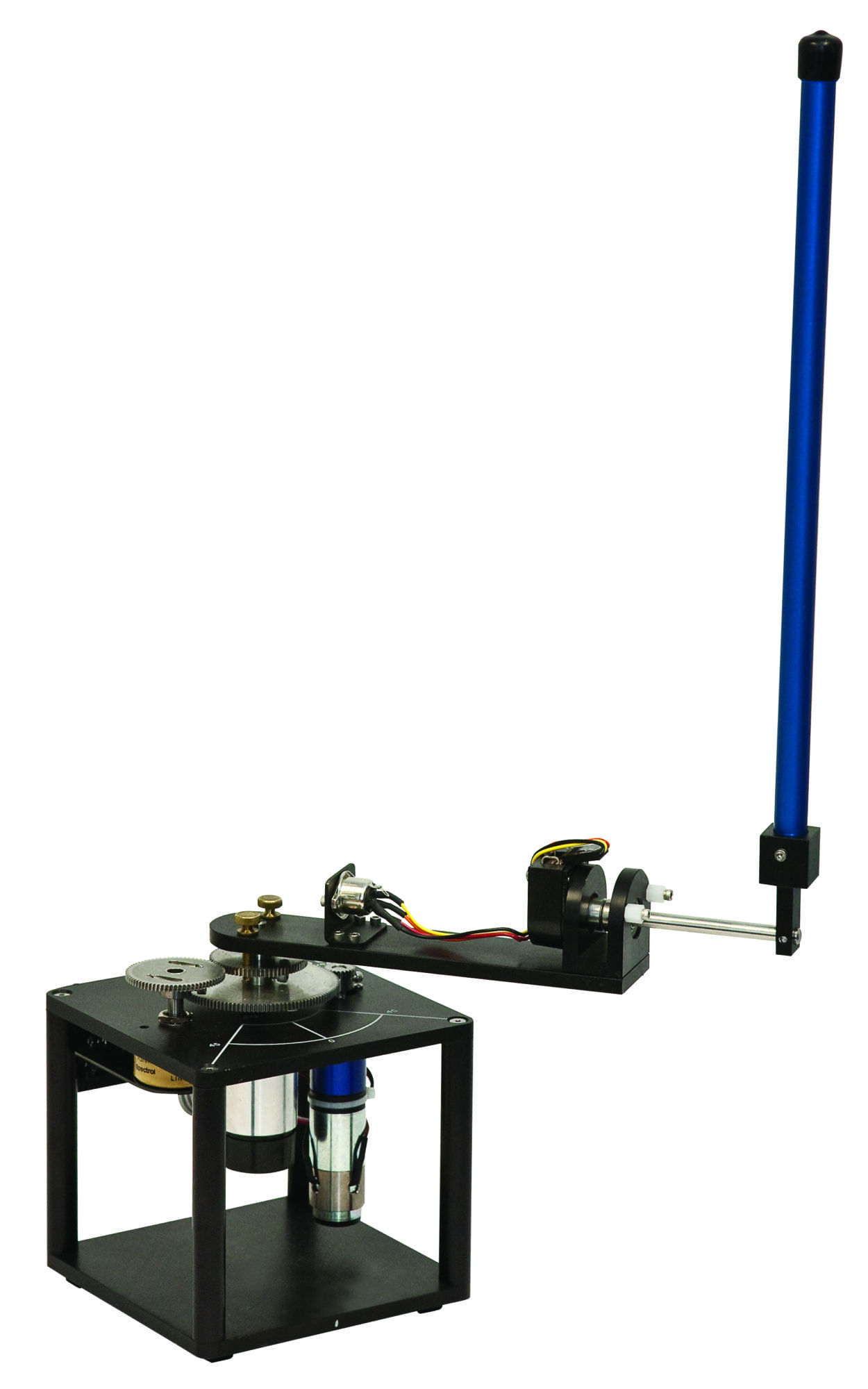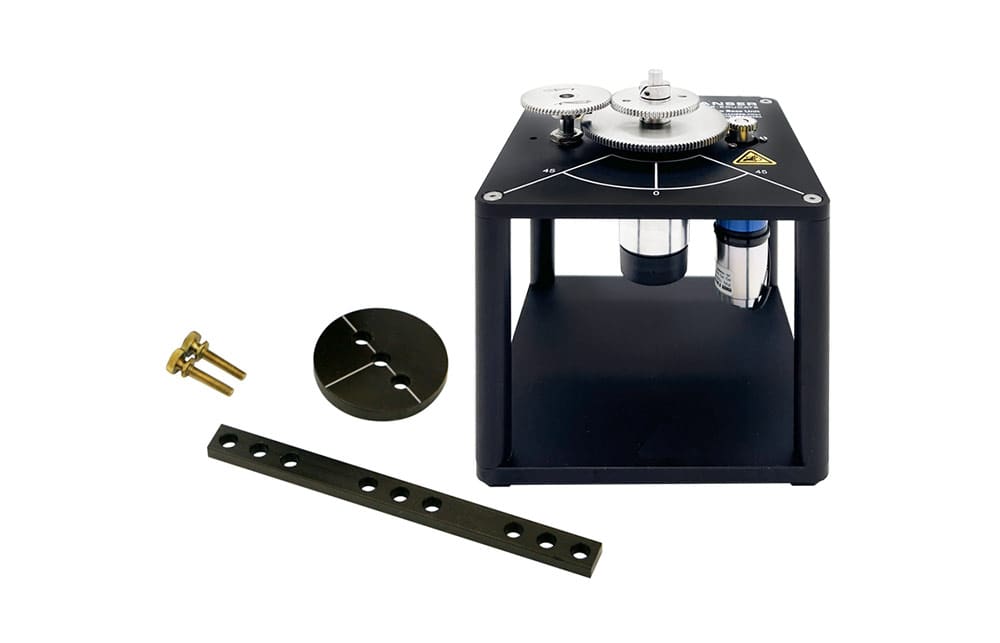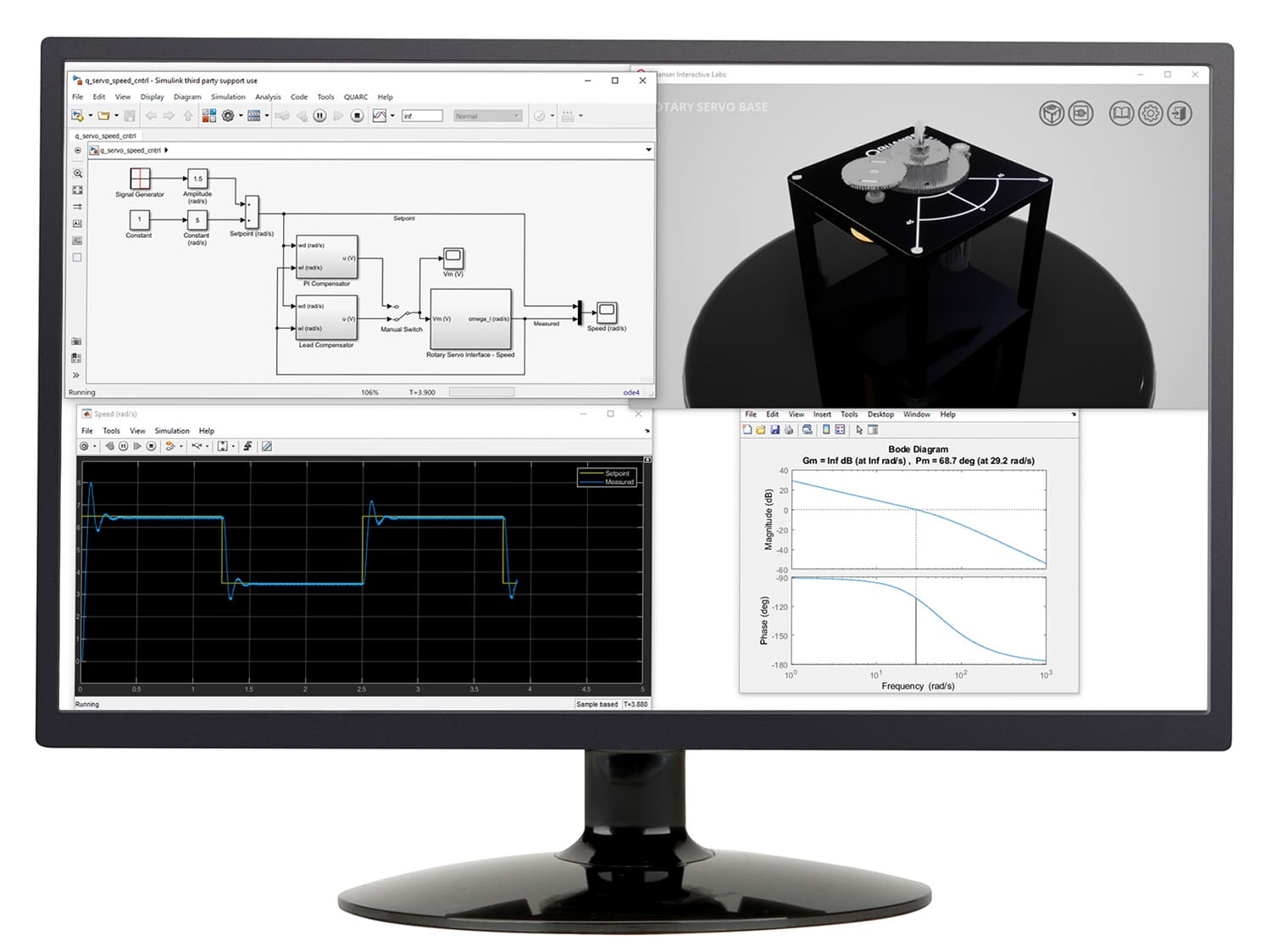Rotary Flexible Joint
Modeling flexible joints in robotic arms
The Rotary Flexible Joint module is ideal for modeling a flexible joint on a robot when mounted on the Rotary Servo Base Unit. It is also useful in the study of vibration analysis and resonance. This experiment uses a sensor to measure joint deflection, to address the control problems encountered in large, geared robot joints where flexibility is exhibited in the gearbox. Students will learn how to model the system using state-space and design a feedback controller with pole-placement.
Product Details
The Rotary Flexible Joint module consists of a free arm attached to two identical springs. The springs are mounted to an aluminum chassis which is fastened to the Rotary Servo Base Unit load gear. The module attaches to a DC motor on the Servo Base Unit that rotates a beam mounted on a flexible joint. The Rotary Flexible Joint module is supplied with three distinct pairs of springs, each with varying stiffness. It comes with three base and three arm anchors for the springs, and allows to obtain a wide variety of joint stiffness. The module is also supplied with a variable arm load that can be mounted at three distinct anchor positions to change the length of the load.
- Flexible Joint module easily attaches to Rotary Servo Base Unit
- Variable load length and spring anchors to change system parameters
- Variable spring stiffness
- High-resolution encoder to sense arm position
- High-quality aluminum chassis with precision-crafted parts
| Module dimensions (L x W x H) | 10 cm x 8 cm x 5 cm |
| Module body mass | 0.3 kg |
| Main arm length | 29.8 cm |
| Main arm mass | 0.064 kg |
| Load arm length | 15.6 cm |
| Load arm mass | 0.03 kg |
| Encoder resolution (in quadrature) | 4096 counts/rev |
| Spring # 1 stiffness | 187 N/m |
| Spring # 2 stiffness | 313 N/m |
| Spring # 3 stiffness | 565 N/m |
Modeling Topics
- Lagrange derivation
- State-space representation
- Model validation
- Parameter estimation
Control Topics
- Pole placement
- Vibration control
The following additional components are required to complete your workstation, and are sold separately:
For Simulink
- QUARC® add-on for MATLAB®/Simulink®
- Rotary Servo Base Unit
- Quanser VoltPAQ-X1 linear voltage amplifier
- One of the following DAQ devices:
- Quanser Q2-USB
- Quanser Q8-USB
- Quanser QPIDe
For LabVIEW
- Quanser Rapid Control Prototyping (Q-RCP) Toolkit® add-on for NI LabVIEW™
- Rotary Servo Base Unit
- Quanser VoltPAQ-X1 linear voltage amplifier
- One of the following DAQ devices:
- NI CompactRIO with Quanser Q1-cRIO
- NI myRIO with Quanser Terminal Board
- Quanser Q2-USB
- Quanser Q8-USB
- Quanser QPIDe
